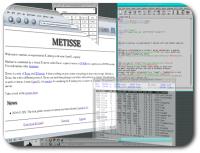
 edundancy makes computers much safer, more stable and more reliable than other aspects of our lives. Paper loss, theft — or more personally — physical damage, illness and other disastrous scenarios may be difficult to avoid. They all relate to the physical whereas information itself is metaphysical.
edundancy makes computers much safer, more stable and more reliable than other aspects of our lives. Paper loss, theft — or more personally — physical damage, illness and other disastrous scenarios may be difficult to avoid. They all relate to the physical whereas information itself is metaphysical.
In IT there is rarely any need to step back and cope with losses. Only momentum can be hindered. The famous song by the Beatles suggests that the same does not hold for actual life. The phrase “How I long for yesterday” means that restoration of a past state is often not possible. On the contrary, with information stored electronically, assuming frequent backups are retained, we can fully restore what we had yesterday. We have what businesses have come to know as “damage control”.
On a more technical tone, I back up my Web servers every 2 days and my databases every single day. My entire hard-drive (excluding applications and media such as music and video) gets mirrored twice a week. Rather than overwriting old backups, I keep a stack as large as the hard drives can hold, so they are usually nearly full. More efficient backups would involve CVS-like mechanisms or tools like rsync, but practicality greatly depends on the bandwidth available.
Backup makes the haven when disaster hits. Copy, copy, duplicate and mirror. Excessive backup: no such thing. You never know how this will save you from a broken hard-drive, a mistakenly deleted directory or mysterious critical changes to settings.







 Filed under:
Filed under: 
 edundancy makes computers much safer, more stable and more reliable than other aspects of our lives. Paper loss, theft — or more personally — physical damage, illness and other disastrous scenarios may be difficult to avoid. They all relate to the physical whereas information itself is metaphysical.
edundancy makes computers much safer, more stable and more reliable than other aspects of our lives. Paper loss, theft — or more personally — physical damage, illness and other disastrous scenarios may be difficult to avoid. They all relate to the physical whereas information itself is metaphysical. recently sought and discovered a plug-in for
recently sought and discovered a plug-in for 
 aving gathered statistics, I estimate that my Firefox theme adaptations had over 100 downloads from this domain. The more popular of the two themes is the Mac OS X clone (shown below). It can be
aving gathered statistics, I estimate that my Firefox theme adaptations had over 100 downloads from this domain. The more popular of the two themes is the Mac OS X clone (shown below). It can be 


 WordPress 1.5 likewise.
WordPress 1.5 likewise. 